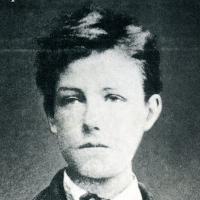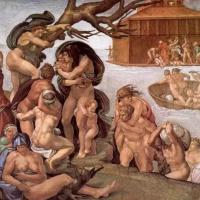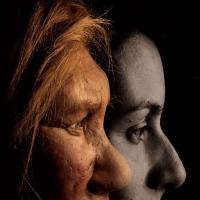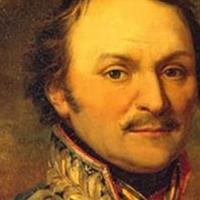Who painted the portrait of Catherine 2. Erotic furniture of Catherine - the story in photos
Portrait of Catherine II Catherine II (1729-1796) - wife of Emperor Peter III, Russian Empress (1762-1796). Born Sophia-Frederick-Augustus, daughter of the prince of Anhalt-Zerbst, was chosen by Elizabeth Petrovna as a wife to the heir to the throne; in 1744, she converted to Orthodoxy with the name of Ekaterina Alekseevna. She had a son, the future Emperor Paul I, but the marriage was unhappy. Several months of the reign of Peter III set against him a noble society; Catherine led the palace coup of 1762: on June 28, 1762, she ascended the throne; deposed Peter III was killed a few days later.
Unlike her predecessors, Catherine was a worker on the throne: she got up at 6-7 in the morning, worked with papers and secretaries, spent “never more than an hour” on the toilet; then there were receptions, lunch, reading, or again conversations with visitors until 18:00 - only after that it was possible to walk, play cards or go to the theater; at 22 o'clock the empress went to bed. She learned Russian, read a lot - and became one of the most educated women of her era.
Its associates were large statesmen and military figures: A.A. Vyazemsky, N.I. Panin, A.R. Vorontsov, P.A. Rumyantsev, A.G. Orlov, G.A. Potemkin, A.A. Bezborodko A.V. Suvorov, F.F. Ushakov et al. She published the magazine "All sorts of things", composed plays, collected paintings and books; wrote her notes and a 4-volume work on the history of Russia - Notes on Russian History. Her letters and notes by N.I. Panin, correspondence with the English ambassador C. Williams, conversations with D. Didro, correspondence with Baron Grim, Voltaire, P.A. Rumyantsev, A.G. Orlov. Her political correspondence and papers of the empress were published.
In politics, Catherine was a pragmatist. She considered serfdom to be economically inefficient and in the early years of her rule spoke out in favor of softening it. But she went towards the nobles: in 1765 the landowners received the right to exile the peasants to hard labor; in its reign, landowners received free of charge more than 50 million acres of land and 425 thousand serf "souls."
At the same time, the secularization of church lands made state 910 thousand souls. In 1763, new states of state institutions were approved, whose employees now began to receive more or less regular salaries. The reform of 1775 introduced a new administrative division, which survived until the 1930s, and a new system of local authorities: the head of the district government - the captain-commander was elected by the nobility, the court was separated from the administration; completely new institutions appeared - orders of public charity, in charge of schools and hospitals.
Its reforms were aimed at boosting industry and trade (decree on freedom of enterprise in 1775, issuance of bank notes in 1769). The “Granted Letter to the Cities” of 1785 guaranteed the citizens protection of their personal honor and dignity and the right to own property. The City Society elected the city duma, which was in charge of landscaping and sanitary conditions - under the control of the city man from the noblemen. The school reform of 1786 created a system of all-inclusive education in the same major and small public schools.
The strong centralized monarchy with a developed system of local authorities, according to the empress, should have been combined with "immutable" laws defining the rights of estates, and partial self-government ("granted letters" to the nobility and cities of 1785) - which created the basis for the formation of civil society. A draft “granted letter” was also prepared for state peasants on the arrangement of free rural inhabitants, but was not put into effect.
She abolished the word "slave" and swearing in official documents, corporal punishment for priests. A first-class museum, the Hermitage, has appeared in Russia, educational institutions for “noble maidens” and an educational house for orphans and foundlings have been opened, and the Free Economic Society has been formed. A large number of new magazines were published, publishing activities, musical and theatrical art were encouraged.
Under Catherine II, Russia took one of the leading places in the “concert” of the European powers: “Not a single gun in Europe, without our permission, dared to shoot”, later told the young employees old Chancellor A.A. Beardless. The empress’s commanders and diplomats solved the fundamental task of Russian foreign policy - the capture of the Black Sea coast (Russian-Turkish wars of 1768-1774 and 1787-1791), defended the borders in the Russian-Swedish war of 1788-1790. With the beginning of the French Revolution of 1789, Catherine II promoted education in 1792-1793. coalitions of European countries against France. When the Constitution of 1791 was adopted in neighboring Poland, Russian and Prussian troops were introduced there and it ceased to exist as an independent state (sections of Poland). At the same time, in domestic politics, there was a turn from reform to reaction (the “affairs” of N.I. Novikov, A.N. Radishchev, the establishment of censorship in 1796).
During the reign of Catherine II, the country's population increased from 20 to 36 million people, the budget grew from 16 to 69 million rubles, and domestic trade - 5 times. With the annexation of the Northern Black Sea Region, new cities arose - Odessa, Kherson, Nikolaev, Sevastopol; the Black Sea trade revived. Military power was provided by the 400,000th army and a powerful fleet. But behind the high-profile victories and the official “prosperity” of the empire, by the end of the century, the first signs of a crisis began to appear. Costly wars and reforms have led to external borrowing, sustained fiscal deficits and inflation.
Most often, pictorial representations of royal persons (and especially in the 18th century) are based on ceremonial portraits from which copies were actively filmed and distributed. Such portraits can be “read”, because the model is always placed on them in such an environment that helps to create a sense of significance, unusualness, solemnity of the image, and each of the details contains a hint of the real or imaginary merits and qualities of the person we see in front of us.
Most of the ceremonial portraits are impossible not to admire. But the question of how the portrait corresponds to reality remains open.
So, for example, the image of Catherine I created by Jean-Marc Nattier in 1717:
But a completely more intimate portrait of Catherine in a peignoir, written by Louis Karawak in the 1720s.
It seems that the researchers came to the conclusion that initially the empress was depicted from the neckline on the portrait, and then a blue ribbon appeared, which can be understood as a hint of the ribbon of the Order of St. Andrew the First-Called and the high status of the person. The only hint.
Louis Caravac was appointed the official court painter - the hoffmaler only under Anna Ioannovna, but before that he managed to write a number of portraits of the family of Peter the Great. Among them are some unusual by modern standards.
Firstly, I personally immediately remember the portrait tsarevich Petr Petrovich in the image of Cupid
Here, of course, it should be said that Russia adopted the gallantry of Rococo from Europe along with its special atmosphere of masquerade, playing heroes and gods of ancient mythology, and manners of behavior, which could not but affect the painting tradition.
And yet there is something peculiar in the fact that little Peter, the "Big Cone", as his loving parents called him, who had high hopes for him, we see just that. But the birth of this boy, who did not live even four years, as well as his relatively good health at first, actually predetermined the fate of Tsarevich Alexei.
We can also imagine the elder sister of Peter Petrovich Elizabeth, recalling the portrait of the work of the same Karavak, written in 1750:
Or a portrait of the work of his student Ivan Vishnyakov, painted in 1743:
But a great success even during the life of the empress was enjoyed by another portrait of Elizabeth Petrovna painted in the middle of the 1710s by Karawak, in which she is depicted in the image of the goddess Flora:
The future empress is depicted naked and lying on a blue ermine-lined mantle - a sign of belonging to the imperial family. In her right hand she holds a miniature with a portrait of Peter I, to the frame of which is attached the St. Andrew's blue ribbon.
Yes, tradition, but there is also a certain kind of piquancy in such an image. An interesting remark about the portrait was made by N. N. Wrangel: “Here is a little girl, an eight-year-old undressed child with the body of an adult girl. She is reclining, coquettishly holding her father’s portrait and smiling so gently and tenderly as if she were already thinking about Saltykov, Shubin, Sivers , Razumovsky, Shuvalov and all the others whom this beautiful creature loved after. "
However, he also noted that Elizabeth had many images.
Here is Elizaveta Petrovna in a man’s suit that fit her like this:
A.L. Weinberg considered the portrait to be the work of Karawak and dated it to 1745. S.V. Rimskaya-Korsakova believed that this was a student copy of Levitsky from the work of Antropov, dating back to the iconographic type of Karavak.
And here is another portrait of Elizabeth in a man’s suit - the textbook “Portrait of Empress Elizabeth Petrovna on a Horse with an Arappochka,” painted by Georg Christoph Groot in 1743:
This portrait can be called ceremonial. Here is the order of St. Andrew the First-Called, a blue moire order ribbon with a sign, a marshal’s wand in the Empress’s hand, a Transfiguration uniform, as well as the fact that Elizaveta Petrovna sits on a horse like a man, and the navy, visible in the bay.
Karavak also has a “Portrait of a Boy in a Hunting Suit,” about which various versions were built. They called him the Portrait of Peter II, and the portrait of Peter III and ... the portrait of Elizabeth. For some reason, the latest version is very close to me.
There are a lot of ceremonial portraits of Catherine II. They were written both by foreigners invited to Russia, and by Russian artists. You can recall, for example, a portrait of Catherine painted by Vigilius Ericksen in front of a mirror, in which the artist uses a peculiar technique that allows the empress to be shown both in profile and in full view.
The profile image of the empress served for the ceremonial portrait painted by Rokotov:
Catherine herself apparently loved another portrait painted by Ericksen, depicting her on horseback:
Still would! After all, the portrait symbolizes the fateful day for the Empress on June 28, 1762, when she, at the head of the conspirators, was sent to Oranienbaum to carry out a palace coup. Catherine sits astride her famous horse Brilliant and is dressed in a military fashion - she is wearing the uniform of an officer of the guards infantry.
The portrait was a tremendous success at court, by order of the empress repeated his work three times, varying the size of the canvas.
Ericksen also wrote a portrait of Catherine II in a sludge and kokoshnik:
One can recall the portrait of Catherine II in a traveling suit, painted by Mikhail Shibanov, an artist about whom almost nothing is known. Is it only that he was close to Potemkin ?:
Remembering the portraits of Catherine the Great, it is impossible to pass by the image created by Borovikovsky.
The artist showed Catherine II "at home", in a salop and a cap. In old age, a lady slowly walks along the alleys of Tsarskaselsky Park, leaning on a staff. Next to her is her beloved dog, English Italian greyhound.
The idea of \u200b\u200bsuch an image probably arose in the literary and artistic circle of Nikolai Lvov and is closely connected with a new trend in art, called sentimentalism. It is significant that the portrait of Catherine II was not executed from nature. There is evidence that the artist posed in the dress of the Empress her beloved chamber-jungfer (room servant) Perekusikhina.
By the way, the fact that in the 18th century only 8 official court painters worked in Russia was quite interesting, among which only one was Russian, and even then ended his life almost tragically. Therefore, it is not surprising that Russian artists did not have the opportunity to write emperors and empresses alive.
For this work, Borovikovsky, about which Lumpy tried, was awarded the title of "appointed" to the academicians. However, despite the recognition of the Academy of Arts, the empress did not like the portrait and was not acquired by the palace department.
But it was in this image that Pushkin captured her in the “Tale of Honor” of “The Captain's Daughter”.
1.Sofia Frederick Augustus Anhalt-Zerbst, future Empress Catherine the Great, was born on April 21 (May 2), 1729 in the German city of Stettin - the capital of Pomerania. Her father Christian Augustus Anhalt-Zerbst came from the Zerbst-Dorneburg line of the Anhalt House and was in the service of the Prussian king, was a regimental commander, commandant, then governor of the city of Stettin.
2. In childhood, the future Catherine’s home was called Fike, which means “Little Frederica”. Fike was a very agile girl, spending a lot of time in street games with the boys, which extremely upset her relatives.
3. The path of the young German princess to the Russian throne began thanks to her uncle who died early, Karl August Holstein-Gottorp. Russian Empress Catherine I was going to marry his daughter Elizaveta Petrovna. However, in the midst of preparations for the wedding, the groom contracted smallpox and died. Elizaveta Petrovna, who ascended to the Russian throne, retained sympathy for her husband's failed husband. Therefore, when it came to the marriage of the heir to the throne Peter FedorovichEmpress Elizabeth chose Fick, the niece of Charles Augustus.
4. Sophia Frederic almost shared the fate of her unfortunate uncle. Arriving in Russia in 1744, the princess began to diligently learn the language of her new homeland. The future empress studied at night, sitting by the open window in the freezing air, which led to severe pneumonia. At some point, the life of the emperor’s bride hung in the balance, but the girl’s body still managed to overcome the ailment.
5. On June 28, 1744, Sofia Frederick Augustus of Anhalt-Zerbst converted from Lutheranism to Orthodoxy and received the name Ekaterina Alekseevna, and the next day was engaged to the emperor.
6. The wedding of the 17-year-old heir to the Russian throne Pyotr Fedorovich and his 16-year-old bride Ekaterina Alekseevna took place on August 21, 1745. The newly-married couple had each other a second cousin and sister.
Grand Duchess Ekaterina Alekseevna with her husband Peter III Fedorovich. Source: Public Domain
7. In the marriage of Peter and Catherine, two children were born. September 20, 1754 was born a boy who was named Paul and who subsequently became the Russian emperor. December 9, 1757 a girl was born, who was named Anna. The Grand Duchess died in infancy. Despite the fact that she was officially recognized by Peter Fedorovich, many call the real father of the girl lover Catherine Stanislav Ponyatovsky, future king of Poland.
8. The relationship between Peter Fedorovich and Catherine was never warm. Even before accession to the throne, the future emperor Peter III intended to send his wife to the monastery, and Ekaterina Alekseevna began to hatchet plans for a coup.

Alexey G. Bobrinsky is the illegitimate son of Catherine II. Photo: wikipedia.org
9. After accession to the throne, Emperor Peter III began to live openly not with Catherine, but with his favorite Elizaveta Vorontsova. Abandoned spouse during this period became pregnant from her favorite Grigory Orlov. Pregnancy and childbirth were kept secret from her husband, the son of Catherine and Grigory Orlov was transferred to the education of trusted people. The illegitimate son of the future empress Alexey G. Bobrinsky became the ancestor of the count family Bobrinsky. In count dignity of Alexei Bobrinsky raised his brother - Emperor Paul I.
10. On June 28, 1762, Emperor Peter III was about to arrive at Peterhof, where a gala dinner was to be held in honor of the emperor’s namesake. Yekaterina Alekseevna was supposed to be the organizer of the celebrations, however, early in the morning in the carriage with her favorite brother Alexei Orlov, she fled to St. Petersburg. In the capital, the supporters of Catherine that day raised a rebellion of the guard, and a few hours later the army, the Senate, the Synod and the people swore allegiance to the new Russian Empress Catherine Alekseevna. At the head of the guard, the empress came to Peterhof, where her husband was. Without any serious resistance, Peter III surrendered to the mercy of the winner. The 33-year-old empress Ekaterina Alekseevna became the sovereign autocratic ruler of the Russian Empire.
During the Great Patriotic War, in one of the palaces of Tsarskoye Selo, a group of Soviet soldiers stumbled upon rooms decorated in a completely crazy erotomanian style. One of the walls was completely hung with phalluses of various shapes carved from wood, along the walls there were armchairs, bureaus, chairs, screens decorated with pornographic images.
The soldiers - the oldest one was only twenty-four years old - were struck and snapped a few films with their "watering cans". Young guys did not loot or break furniture, they just took a couple of dozen photos as a keepsake. Most of the tapes disappeared in the flames of war, but several shots nevertheless fell into the hands of Peter Vodich, who lives in Belgium and is the author of several extremely interesting investigative films.


He came to Russia and tried to find out what happened to the furniture from those five rooms. Alas, he did not find out anything. Museum workers flatly refused to talk about this topic and stated that Catherine the Second did not have any “secret rooms”. Then they nevertheless drove to Gatchina and showed fifteen scattered exhibits from the Hermitage funds. Snuffbox, several statuettes, a shield with erotic medallions. “Of course,” said one historian coldly, who does not work in the Hermitage, “Catherine, being a man of impeccable taste, would not be limited to such an eclectic set, but you will never know where the other exhibits are.” Hermitage staff talked about paintings, engravings, and small oddities, but they denied the fact of the existence of furniture. 
Nevertheless, it is known that in the thirties a collection of erotic art belonging to the Romanov family was cataloged. This collection was shown to selected visitors to the museum, evidence of this has been preserved. But there is no catalog. He, like the entire collection, was allegedly destroyed in 1950. Judging by the stories, a significant part of the exhibits belonged to the XVIII century, but who are these storytellers? What did they generally understand in art? 
Employees of the Hermitage acknowledge that Catherine designed a boudoir for Platon Zubov, but they immediately deny that anything came of this office until the 20th century. 
However, it is not. There is a famous story about how Andrei Ivanovich Somov, who worked in the Hermitage, showed Petersburg intellectuals an officially non-existent rarity - a wax copy of a member of Potemkin, and Vasily Rozanov, by the way, damaged it with his sweaty fingers. And so, by chance and almost by accident, but some people, whose names I would not want to be named for certain reasons, stumbled upon a really large-scale collection of erotica and pornography - the “secret cabinet”. 
Will it be possible to find the “erotic office”, or it will remain a legend, no one can now say with confidence. We spoke with Vodich about all this for several hours in a row, considering various possibilities, but came to the conclusion that only a case can clarify the situation. 
This, alas, is the tradition of modern super museums - to hide and sometimes even destroy artifacts of erotic art. Yes, in times of rampant pornography and rampant libertianism, cultural tribes tremulously preserve the traditions of hypocrisy and hypocrisy. And the National Gallery in London, the Louvre in Paris, the Pinacoteca in Munich, the Hermitage in St. Petersburg, not to mention the Prado in Madrid and the Vatican in Rome, in the near foreseeable future will, like two hundred years ago, hold erotic art for the Swiss family castles, away from the eyes of an immodestly curious public. 






